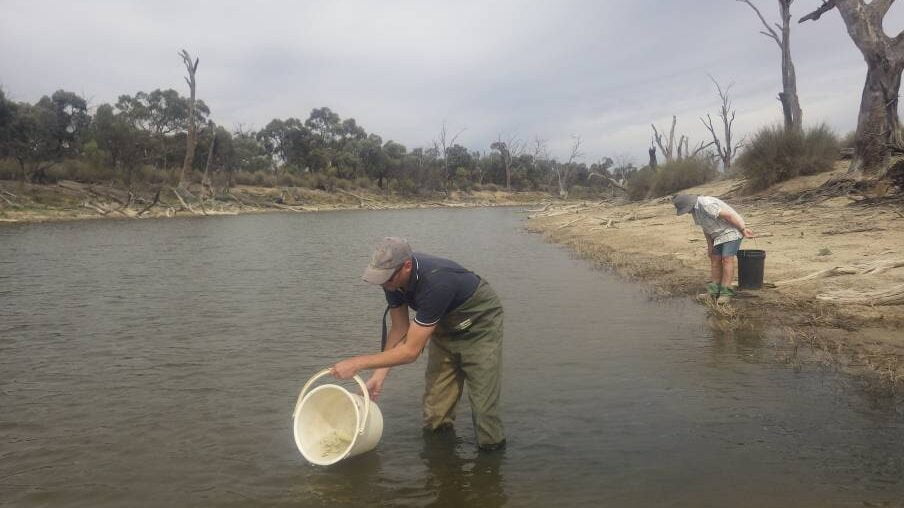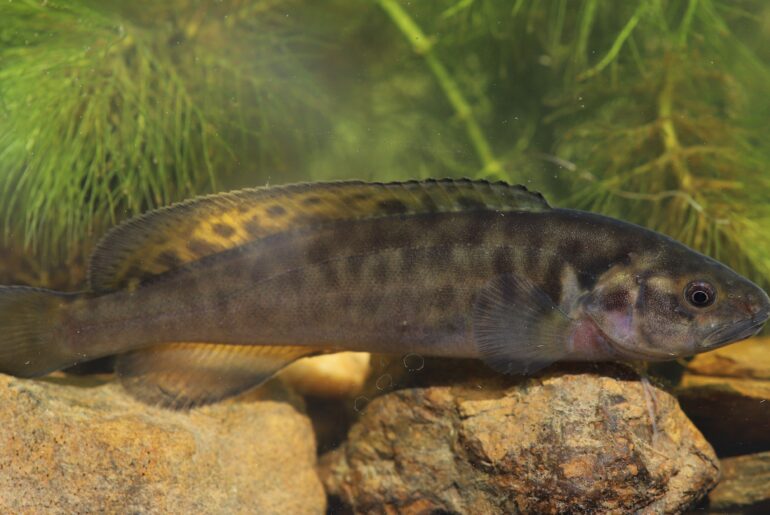This was one of a series of workshops on topical fish management and conservation issues in the Murray-Darling Basin. The workshops were designed to summarise current knowledge, identify priority issues, and stimulate future research and management activity.
Stocking and translocation of fish is widely practised around the world, and has contributed to the development and management of a wide range of recreational and commercial fisheries, which can have important economic, cultural and recreational benefits. However, there is potential for stocking and translocation to have significant environmental impacts, and these impacts need to be considered.
Previous stocking and translocation practices have often failed to consider the environmental consequences and, as a result, unforeseen impacts have occurred. Many fish species can now be readily bred in hatcheries, so the stocking of hatchery-bred fish is a common management response to declining fish stocks. However, stocking is not a ‘cure all’, and to address concerns about the existing, past and future management of stocking and translocation across the MDB, this workshop examined key issues.
Findings:
Five keynote papers were given at the workshop, along with perspectives from a range of jurisdictional and industry stakeholders. The workshop reviewed current management practice for translocation and stocking across the MDB, and formulated a series of priority actions and recommendations. The workshop participants concluded that:
- Translocation and stocking activities are a valuable management action for certain purposes, but there are risks with conducting such activities. Stocking and translocation actions must be implemented in an ecologically sustainable way.
- While significant progress has been made to address the issues of translocation and stocking within the States and the ACT, current management is generally uncoordinated between these jurisdictions.
- Fish translocation and stocking activities have ecological, commercial, cultural and recreational dimensions, and coordinating these efforts across the Basin will therefore need a balance of ecological, economic and social outcomes and expectations.
- A register of stocking and translocation information across the Basin needs to be developed.
Management implications:
- Fish translocation and stocking activities can carry with them risks which at present are not always well understood or documented. More systematic and robust approaches to risk assessment and management are needed across the full range of fish translocation and stocking activities.
- All Basin jurisdictions need to urgently review their policy, legal and administrative frameworks relating to fish translocation and stocking practices to ensure that the precautionary principle is factored into relevant decision making.
- Governments need to recognise the full potential impacts of inappropriate stocking and translocation practices on fish species and communities and commit to reducing or avoiding such impacts through the introduction of consistent and appropriate risk assessment procedures.
- Inter-basin water transfers and the use of live organisms as bait are considered as priorities for risk assessment.
- A comprehensive quality assurance and accreditation scheme for aquaculture establishments is required within all Basin jurisdictions.
- Aquaculture establishments should be accredited for specific purposes (conservation or recreational stocking) to ensure that the operating protocols are appropriate for achieving a suitable level of genetic diversity.
- A more rigorous and sophisticated decision-making process needs to be developed for all stocking of both native and exotic species for recreational purposes. Such a process needs to include a documented analysis of the social, economic and environmental costs and benefits of the proposed stocking activity.
- The aims and objectives for individual stocking programs need to be clearly established to allow meaningful review and the determination of monitoring requirements and performance indicators.
- Stocking programs should be focused on delivery of outcomes for recreational fishing rather than inputs. Appropriate monitoring programs should be established to allow measurement of success or otherwise.
- Governments must recognise the importance of threatened species breeding programs and resource them appropriately.
- The potential ecological implications of translocation and stocking activities must be considered at a broader geographical scale than just the stocking point or waterbody.
Read more – Managing fish translocation and stocking in the Murray Darling Basin
Related Projects:
Impacts of native fish stocking on fish within the Murray-Darling Basin



